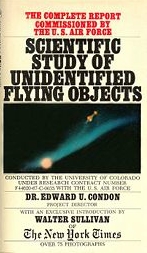

The Condon report
UFOLOGY's Desire for Scientific Recognition
By Tim Printy Ó 1999
Updated July 2003
Ever since 1947, flying saucers have become part of modern folklore. Like the "flying dutchman", mermaids, sea monsters and the like, we have been told numerous stories of fantastic craft that can do incredible feats. We are offered that the only solution is that they have to be alien spaceships of some kind. UFOlogy has spent the last fifty-plus years yearning for some form of scientific recognition. However, science has either ignored the subject or rejected the Extra-Terrestrial Hypothesis (ETH).
In 1949, Dr. J. Allen Hynek was contracted by the US Air Force to investigate the sightings of UFOs since 1947. Dr. Hynek, an astronomer from Northwestern University, determined "...that there are sufficient psychological explanations for the reports of unidentified flying objects to provide plausible explanations for reports not otherwise explainable" (Steiger 233). Even in later years, after his conversion to pro-ETH leanings, Hynek felt that there was little to no importance to the initial sightings of 1947: "In reviewing these cases again in 1970, I recognized their markedly poor quality... In 1947-48, there really wasn't too much to get excited about" (Hynek 172).
Despite the desire to include the mythological "Estimate of the Situation" as proof that scientists were endorsing the ETH in 1948, we have never seen this document and it seems very unlikely that it existed as described by Ed Ruppelt, a former head of project Bluebook. Scientists attached to Project SIGN supposedly wrote this "Estimate". If these scientists were so sure, wouldn't Hynek have been equally convinced? How does this explain the report by the RAND Corporation done in early 1949, which stated:
We have found nothing which would seriously controvert simple rational explanations of the various phenomena in terms of balloons, conventional aircraft, planets, meteors, bits of paper, optical illusions, practical jokers, psychopathological reporters., and the like. (Hall ref no. 19)
Of course, it can be said that this was after the "Estimate" had been shot down and no other opinions were being accepted by the USAF. Still, an independent agency should have hinted at a possibility of the ETH if there was enough evidence to support it. Their contrary conclusions seem to indicate that Hynek's recollections were correct and that the original sightings investigated by project SIGN were not that impressive.
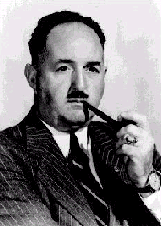
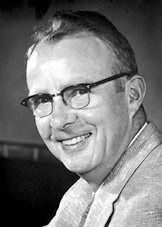
Dr. HP Robertson (L) was the head of the CIA panel and Dr. Alverez (R) was a radar expert on the panel
By 1953, the CIA was curious and contracted a blue ribbon panel of scientists under the direction of Dr. H.P. Robertson. This panel was not made up of a bunch of yes men. One of the scientists present was Dr. Luis Alverez, a future Nobel Prize winner and expert on radar. After a week of evaluating the sightings to date, they determined, "...that reasonable explanations could be suggested for most sightings and 'by deduction and scientific method it could be induced (given additional data) that other cases may be explained in a similar manner" (Condon et al. 909). In the summary of their report, they made the following statement, "...there is no evidence that the phenomena indicates a need for the revision of current scientific concepts" (Condon et al. 909).
Thus the Robertson panel concluded that UFO reports were simply misidentifications and that scientific study was not that important for such a phenomena that had so little hard data. Dr. Hynek, who was present, states, "The panel was not given access to many of the truly puzzling cases." (Hynek, 169) This is an amazing statement by Dr. Hynek, who states in the same book, "But the original 237 Project Sign reports were not convincing and did not support "visitors from space." (Hynek 172) What puzzling cases is he discussing that the Robertson panel did not see? He gives us no examples. The evidence provided to the Robertson Panel states that they received 75 of the best-documented cases for 1951-52! If Dr. Hynek really felt that there were more convincing cases, why did he not present them to the panel? He was there in an advisory capacity. He makes the EXCUSE of being junior in the ranks of science but certainly, he could make a case if he has some truly profound cases. The truth of the matter is that there were no convincing cases in 1953 for Hynek to present contrary to what he claims in his book.
At the same time the Robertson Panel was convening, the USAF was conducting an in-depth study of the matter by contracting Battelle Memorial Institute. It had started in late 1951 and would progress over several years. The final report was completed in May 1955. The study group included all sorts of scientists from varying fields including astronomy, physics, and psychology. This group made a thorough study of the UFO matter and was titled Project Bluebook Special Report #14 (SR14). While many UFOlogists today claim that the study has many flaws, it was about as thorough as one could expect at the time. In the conclusions of this report we read:
It can never be absolutely proven that "flying saucers" do not exist. This would be true if the data obtained were to include complete scientific measurements of the attributes of the each sighting, as well as complete and detailed descriptions of the objects sighted. It might be possible to demonstrate the existence of "flying saucers" with data of the type, IF they were to exist.
Although the reports considered in this study usually did not contain scientific measurements of the attributes of each sighting, it was possible to establish certain valid conclusions by the application of statistical methods in the treatment of the data. Scientifically evaluated and arranged, the data as a whole did not show any marked patterns or trends. The inaccuracies inherent in this type of data, in addition to the incompleteness of a large proportion of the reports, may have obscured any patterns or trends that otherwise would have been evident...
Therefore, on the basis of this evaluation of the information, it is considered to be highly improbable that any of the reports of unidentified aerial objects examined in this study represent observations of technological developments outside the range of present-day scientific knowledge. (United States Air Technical Intelligence Center 94)
Something also noted in the study is the quality of the data. The report states:
...the data were subjective, consisting of qualified estimates of physical characteristics rathre than of precise measurements. Furthermore, most of the reports were not reduced to written form immediately. The time between sighting and report varied from one day to several years. Both of these factors introduced an element of doubt concerning the validity of the original data, and increased it s subjectivity. This was intensified by the recognized inability of the average individual to estimate speeds, distances, and sizes of objects in the air with any degree of accuracy...The danger lies in the possibility of forgetting the subjectivity of the data at the time that conclusions are drawn from the analysis. It must be emphasized, again and again, that the conclusions contained in this report are based NOT on facts, but on what many observers thought and estimated the true facts to be. (United States Air Technical Intelligence Center 3-4)
The lack of any hard facts to go with these reports made the study difficult and this resulted in the following comment:
The reaction, mentioned above, that after reading a few reports, the reader is convinced that "Flying saucers" are real and are some form of sinister contrivance, is very misleading. As more and more of the reports are read, the feeling that "saucers" are real fades, and is replaced by a feeling of skepticism regarding their existence. The reader eventually reaches a point of a saturation, after which the reports contain no new information at all and are no longer of any interest. (United States Air Technical Intelligence Center 93)
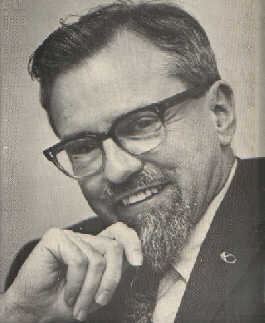
Dr. J. Allen Hynek - The USAF scientific consultant for Project Bluebook
By the 1960s science had turned a very skeptical view towards UFOs. Dr. Hynek blames the USAF and the Robertson panel by stating, "...they (the Robertson panel) made the subject of UFOs unrespectable..." (Hynek 169). What is obvious is that Dr. Hynek blamed these men for not taking up his pet cause. One must remember that Dr. Hynek worked for the USAF in investigating UFOs for almost twenty years. When the USAF closed down its project, Dr. Hynek was left without any funding and no method for him to continue research in the matter. Dr. Roy Craig stated that Dr. Hynek envisioned a form of government study on the entire subject and saw himself as the lead scientist on the matter. Since this never happened, he apparently held a grudge against those who prevented him from obtaining this. Major Quintenella describes how Hynek, in the last years of project Bluebook, would be "out of control" and would often hinder investigations instead of help. Whatever Hynek's motives were, there is one thing that is certain. He failed to persuade anyone, other than the believers of the phenomena, that UFOs were capable of being studied scientifically. He also failed to provide any evidence to indicate that UFOs were not anything but natural phenomena, hoaxes, and misperceptions by observers.
By 1966, the USAF was tired of the matter and following the events of the Michigan UFOs of 1965, congress held an investigation. This was referred to as the O'Brien commission. Again, a panel of scientists was called upon to evaluate the matter. Among them was an astronomer named, Carl Sagan. In their discussions, they state:
Although about 6% (646) of all sightings (10,147) in the years 1948 through 1965 are listed by the Air Force as "unidentified," it appears to the Committee that most of the cases so listed are simply those in which the information available does not provide an adequate basis for analysis. (Condon et al. 813)
They also go on to say, "... there appears to be no verified and fully satisfactory evidence of any case that is clearly outside the framework of presently known science and technology" (Condon et al. 814). These are almost the same words used by the Robertson Panel thirteen years before! The Committee suggested that contracting out a university to investigate the matter would strengthen the Air Force investigations.
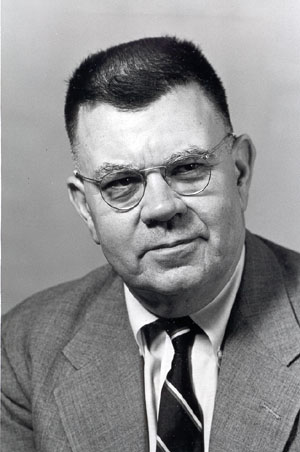
Dr. Edward Condon - Head of the Colorado project
This was the beginning of the University of Colorado's study. Dr. Edward Condon, a professor of physics and astrophysics, was the leader of this study and it became a fiasco because of the great importance to the UFO community. Dr. Condon stated:
I had some awareness of the passionate controversy that swirled around the subject, contributing added difficulty to the task of making a dispassionate study. This hazard proved to be much greater than was appreciated at the outset. Had I known the extent of the emotional commitment of the UFO believers and the extremes of conduct to which their faith can lead them, I certainly would never have undertaken the study. (Condon et al. 548)
Dr. Condon also quotes the magazine the Nation, which on 31 October 1966, stated, "If Dr. Condon and his associates come up with anything less than the little green men from Mars, they will be crucified" (Condon et al. 551).
Dr. Hynek spends an entire chapter of his book, The UFO Experience, bashing the Condon study. Even more amazing is how the Condon study has been referred to as a whitewash intended to sell the fact that UFOs were nothing but misperceptions. He questions the methodology of the Condon study and claims that they did not look at the right cases. Condon did look into many cases but felt that the older cases had gone stale and that there was nothing to follow up. When they did follow up on these cases, prosaic explanations became plausible. Those cases, which could not be explained, were not given glorious status as Dr. Hynek and others would have done. Instead, the scientists proposed likely scenarios that could have produced the event described. Dr. Roy Craig, writing about his investigations, stated:
Reviewing the results of our field investigations, one must note the consistent erosion of information contained in the initial report. Instead of an accumulation of evidence to support the claim of the sighting of an unusual vehicle, erosion of claimed supporting evidence to the vanishing point was a common investigative experience. As shown by the examples in the above discussion, this was true of both current and older cases. As an investigation progressed, the extraordinary aspects of the sighting became less and less dominant, and what was left tended to be an observation of a quite ordinary phenomena. Current sightings which were investigated and left unresolved were often the same general character of those resolved. The inconclusiveness of these investigations is felt to be a lack of information with which to work, rather than of strangeness which survived careful scrutiny of adequate information... (Condon et al. 72)
The Condon study was ridiculed by Pro-ETH supporters because of a memo written by Dr. Low, the project coordinator. In a memo to University officials, he stated:
The trick would be, I think, to describe the project so that, to the public, it would appear to be a totally objective study but, to the scientific community, would present the image of a group of nonbelievers trying their best to be objective, but having almost zero expectation of finding a saucer. (Condon et al. x-xi)
This memo found its way into the hands of Dr. McDonald, a long time supporter of the ETH, and NICAP. The memo was then given to John Fuller, a pro-ETH writer, who wrote an article about the Condon study and called the investigation a "Half-million dollar trick" to fool Americans into believing the investigation was being made objectively. However, Fuller and others completely have quoted Dr. Low out of context. Even Dr. Hynek did not feel that the memo was quoted accurately:
I believe that Low has been unduly criticized for this memo. I can appreciate the dilemma Low faced. He wanted the University to get the contract (for whatever worldly reason) and to convince the University that they should take it. He was aware, as I certainly have been for years, that scientific opinion was such that even serious mention of the subject was equivalent of scientific tar and feathers. He wanted to invoke a cloak of responsibility. But the path he chose was unfortunate." (Hynek 211)
This is the same thing Dr. Low stated, in reference to the Fuller article:
My concern, in writing the memo, was the University of Colorado and its standing in the University world; it was a matter of attitudes the scientific community would have toward the University if it undertook the study. It had nothing to do with my personal outlook on the UFO question. (Condon et al. 549).
Condon commented that the memo did not represent the opinion of the study and that it was a matter of only "thinking out loud" by Dr. Low (Condon et al. 549). The UFO group, APRO, made a statement that indicated NICAP was behind the sabotage of the project, "...there was a strong attempt by the NICAP group to control the study. When they found they couldn't control it, they attempted to scuttle it." (Condon et al. xi)
Thus the only serious long term scientific study was destroyed from within by those who felt that the study was not going their way. This myth, that the Condon study was a whitewash, has been perpetrated ever since. When the report was completed, the National Academy of Sciences reviewed it. A panel of eminent scientists was selected and they stated:
It is the unanimous opinion that this has been a very creditable effort to apply objectively the relevant techniques of science to the solution of the UFO problem. The report recognizes that there remain UFO sightings that are not easily explained. The report does suggest, however, so many reasonable and possible directions in which an explanation may eventually be found, that there seems to be no reason to attribute them to an extraterrestrial source without evidence that is much more convincing. The report also shows how difficult it is to apply scientific methods to the occasional transient sightings with any chance of success. (Condon et al. viii)
The panel also read scientific papers presented by both sides. This included papers written by Dr. McDonald. He did not convince this group of scientists one iota. Their opinion was in favor of the Condon report. Again, UFOlogy failed to impress science with their "data".
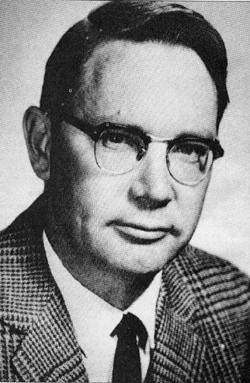
Dr. McDonald's UFO evidence failed to impress scientists
Following the Condon study, there were several attempts at holding scientific discussions on the matter. One symposium held by Dr. Carl Sagan and Thorton Page found its way into a book titled, UFOs: A Scientific Debate. This is a collection of papers that do not provide anything more than amplification of data presented by the Condon Study. Dr. McDonald attempted to support his conclusions but falls short in his report of conclusive evidence. Other investigators have since identified explanations for many of his case studies. Dr. Sagan, wrote the following about Dr. McDonald:
McDonald's view on UFOs was based, he said, not on irrefutable evidence, but was a conclusion of last resort: All the alternative explanations seemed to him even less credible. In the middle 1960s I arranged for McDonald to present his best cases in a private meeting with leading physicists and astronomers who had not staked a claim on the UFO issue. Not only did he fail to convince them that we were being visited by extraterrestrials; he failed even to excite their interest. And this was a group with a very high wonder quotient. It was simply that where McDonald saw aliens, they saw much more prosaic explanations. (Sagan 103)
The scientific approach failed UFOlogy and there was no attempt to engage science again until 1997. Then a group calling itself the SSE (Society for Scientific Exploration), held a symposium on the matter. Dr. Peter Sturrock led them and the event has since been called the Sturrock report. However, unlike the Condon study, there were no opinions presented to a panel of scientists that were con-ETH. All the papers presented were by pro-ETH advocates. Despite this, the panel still reached the following conclusions:
It was clear that at least a few reported incidents might have involved rare but significant phenomena such as electrical activity high above thunderstorms (e.g., sprites) or rare cases of radar ducting. On the other hand, the review panel was not convinced that any of the evidence involved currently unknown physical processes or pointed to the involvement of an extraterrestrial intelligence (Sturrock 121)
This sounds very much like the Condon Report and Robertson Panel's conclusions. The UFO community cheered this report only because of one statement in the summary:
The panel also reviewed some of the conclusions advanced in 1968 by Dr. Edward U. Condon, director of the Colorado Project. He asserted that "nothing has come from the study of UFOs in the past 21 years that has added to scientific knowledge," and that "further extensive study of UFOs probably cannot be justified in the expectation that science will be advanced thereby." While agreeing with the first conclusion and its extension to the present, the panel considers that there always exists the possibility that investigation of an unexplained phenomenon may lead to an advance in scientific knowledge. (Sturrock 122)
This tepid endorsement to keep researching the UFOs also carries a caveat in the summary overlooked by many of the readers and downplayed by Sturrock himself. He wrote the press release but chose to omit some of the negative statements made by the scientists like, "It appears that most current UFO investigations are carried out at a level of rigor that is not consistent with prevailing standards of scientific research"(Sturrock 121). Another one is, "It may therefore be valuable to carefully evaluate UFO reports to extract information about unusual phenomena currently unknown to science. However, to be credible to the scientific community, such evaluations must take place with a spirit of objectivity and a willingness to evaluate rival hypotheses." (Sturrock 121). Both of these are politely stating that these "scientists" could not even persuade a board of independent observers to give a firm endorsement to their studies. Notice the statement about lacking standards for their studies. The gentlemen who presented the cases all sound very educated and many had Doctorate's. Apparently, they must have received the degrees and discarded all that they had learned. Several of the cases presented have had prosaic explanations offered. One encounter discussed by Richard Haines sounded like the planet Venus was involved! Just this one case shows how the two statements above apply. Haines did not research the matter and did not present any other possible hypothesis.
Another problem with Sturrock's announcement to the press is the misrepresentations of Condon's words. It is true that he stated in his original report, "Careful consideration of the record as it is available to us leads us to conclude that further extensive study of UFOs probably cannot be justified in the expectation that science will be advanced thereby" (Condon et al 1). However, many authors seemed to have ignored what he added just a few paragraphs later:
Scientists are no respecters of authority. Our conclusion that study of UFO reports is not likely to advance science will not be uncritically accepted by them. Nor should it be, nor do we wish it to be. For scientists, it is our hope that the detailed analytical presentation of what we were able to do, and of what we were unable to do, will assist them in deciding whether or not they agree with our conclusions. Our hope is that the details of this report will help other scientists in seeing what the problems are and the difficulties of coping with them.
If they agree with our conclusions, they will turn their valuable attention and talents elsewhere. If they disagree it will be because our report has helped them reach a clear picture of wherein existing studies are faulty or incomplete and thereby will have stimulated ideas for more accurate studies. If they do get such ideas and can formulate them clearly, we have no doubt that support will be forthcoming to carry on with such clearly-defined, specific studies. We think that such ideas for work should be supported.
Some readers may think that we have now wandered into a contradiction. Earlier we said that we do not think study of UFO reports is likely to be a fruitful direction of scientific advance; now we have just said that persons with good ideas for specific studies in this field should be supported. This is no contradiction. Although we conclude after nearly two years of intensive study, that we do not see any fruitful lines of advance from the study of UFO reports, we believe that any scientist with adequate training and credentials who does come up with a clearly defined, specific proposal for study should be supported...
Therefore we think that all of the agencies of the federal government, and the private foundations as well, ought to be willing to consider UFO research proposals along with the others submitted to them on an open-minded, unprejudiced basis. While we do not think at present that anything worthwhile is likely to come of such research each individual case ought to be carefully considered on its own merits.
This formulation carries with it the corollary that we do not think that at this time the federal government ought to set up a major new agency, as some have suggested, for the scientific study of UFOs. This conclusion may not be true for all time. If, by the progress of research based on new ideas in this field, it then appears worthwhile to create such an agency, the decision to do so may be taken at that time. (Condon et al 2-3)
As one can read by the statement above, he did not expect this statement to be the final word on the matter and that those who try to study UFOs scientifically should be supported if they have a good plan. Strangely, the SSE seems to have mirrored Condon's comments but we never heard this from Sturrock's press release.
The failure of the SSE to get more than a tepid endorsement of pursing scientific "research" is very telling for the case of UFOlogy. For many years, UFOlogy claims that the government withheld information about "Flying Saucers." You have to shake your head when you realize that the SSE did the exact same thing. They withheld data that was damaging to their case. It is comparable to a trial being held where the prosecution gets to put up all the evidence and the defense attorney is not even present. Clearly, it is nothing but an effort to grab headlines, which UFOlogy has always been good at doing. The data presented, like some form of UFO candy, is lacking in any meaningful substance. Science has shown this time and time again. The symposium for the SSE was no different than all the scientific committees before it. It took the clever spin supplied by Peter Sturrock to make it sound like UFOs deserved serious consideration. However, Sturrock failed in his ultimate goal of motivating these scientists into believing in his pet cause and, essentially, vindicated what Condon had written in his report!
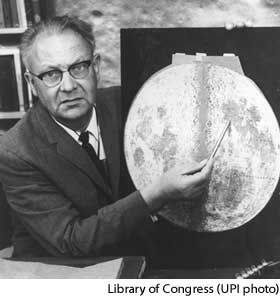
Astronomer Gerard Kuiper was not impressed with the UFO evidence
UFOlogy always makes claims that science does not do research on UFOs because they fear being made fun of by their counterparts. Dr. Gerard Kuiper responds:
I should correct a statement that has been made that scientists have shied away from UFO reports for fear of ridicule. As a practicing scientist, I want to state categorically that this is nonsense. A scientist's research is self-directed. He knows how limited and cut-up is the time he can devote to research, between his numerous other duties. He selects his area of investigation not because of pressures but because he sees the possibility of making some significant scientific advance. We are living in a period of explosive growth of science, and the scientist has dozens of choices. He selects in much the same manner in which a hiker selects a path over a dangerous mountain slope or through a jungle. At all times he fights against time and he knows that his scientific reputation is at stake. If his judgment was right, he will get results and be praised by his peers. A scientist would consider the discovery of evidence of life on another planet as perhaps the greatest contribution he could make and one that might earn him the nobel Prize. But this is no reason for him to chase every will-o'-the-wisp. A scientist chooses his field of inquiry because he believes it holds real promise. If later his choice proves wrong, he will feel very badly and try to sharpen his criteria before he sets out again. Thus, if society finds that most scientists have not been attracted to the UFO problem, the explanation must be that they have not been impressed with the UFO reports. In my own case, after having examined several dozen of them during the past twenty years, I have found nothing that was worthy of further attention. Each scientist must, of course, make this kind of decision for himself. Anyone who is curious or impressed has the privilege to follow them up and is free to solicit the interest of others. (Condon et al. 839-840)
Dr. Kuiper moves on to state:
It is reiterated that no greater progress in science can be made than through discovery of a totally new phenomenon. However, only when UFO observations are made that convince a number of competent scientists that something really significant may have occurred, will they drop their active programs and redirect their efforts. The near absence of present scientific participation can only reflect that the reports have been found wanting.
Again, if one proposes that UFO reports merit scientific inquiry, one must also admit that in no other field of inquiry the scientist is so handicapped by an odd and discouraging assemblage of "data." More than 90% of these reports are found to be hoaxes or poor accounts of well-known or trivial events. Under those circumstances an unexplained residue of perhaps 10% is no basis to believe in miracles. It is more reasonable to assume that this residue is so distorted or incomplete as to defy all analysis. (Condon et al. 842)
UFOlogy wants a special consideration from scientists to make up for their lackluster attempts to gather meaningful hard data. Despite numerous sightings, suspected crashed saucers, and alleged authentic photographs/videotape/film of true UFOs, UFOlogy has yet to provide anything convincing. It looks good in the media but mainstream science will always scoff at groups proposing theories that have no hard data or facts to support their conclusions.
Works Cited
Condon, E. U., et al., eds. Scientific Study of Unidentified Flying Objects. New York: Bantam 1968.
Hall, Richard ed. Project SIGN Air Force Documents 1948-1949. Mount Ranier, MD: Fund for UFO Research 1998.
Hynek, J. Allen. The UFO Experience A Scientific Inquiry. New York: Marlowe & Company 1972.
Sagan, Carl. The Demon Haunted World. New York: Ballantine 1996.
Steiger, Brad. Project Bluebook. New York: Ballantine 1976.
Sturrock, Peter. The UFO Enigma. New York: Warner Books 1999.
United States Air Technical Intelligence Center. Project Blue Book Special Report NO. 14: Analysis of Reports of Unidentified Aerial Objects. Project No. 10073. 5 May 1955
Back to My skeptical opinion about UFOs